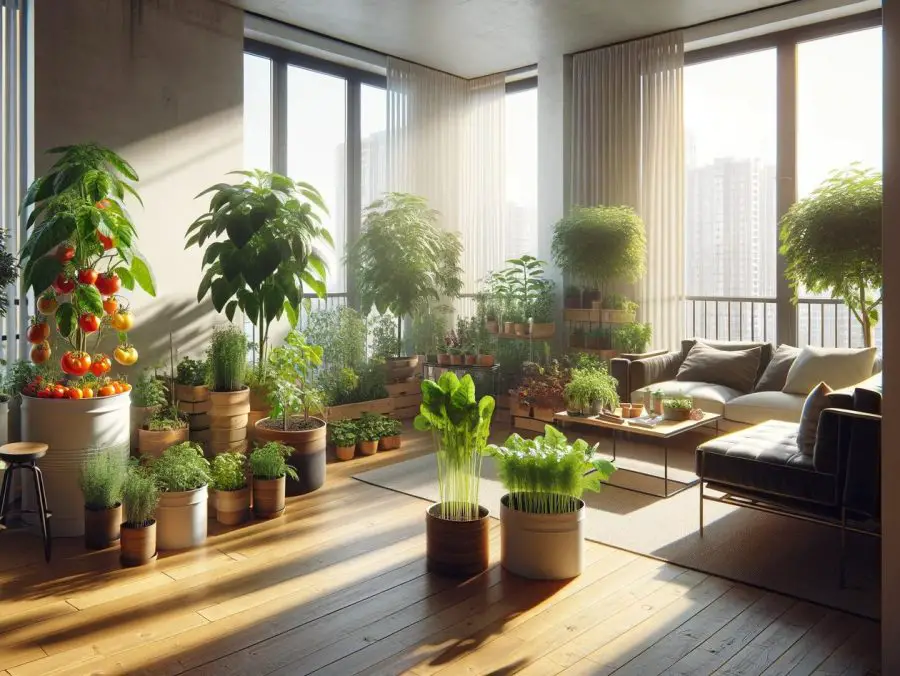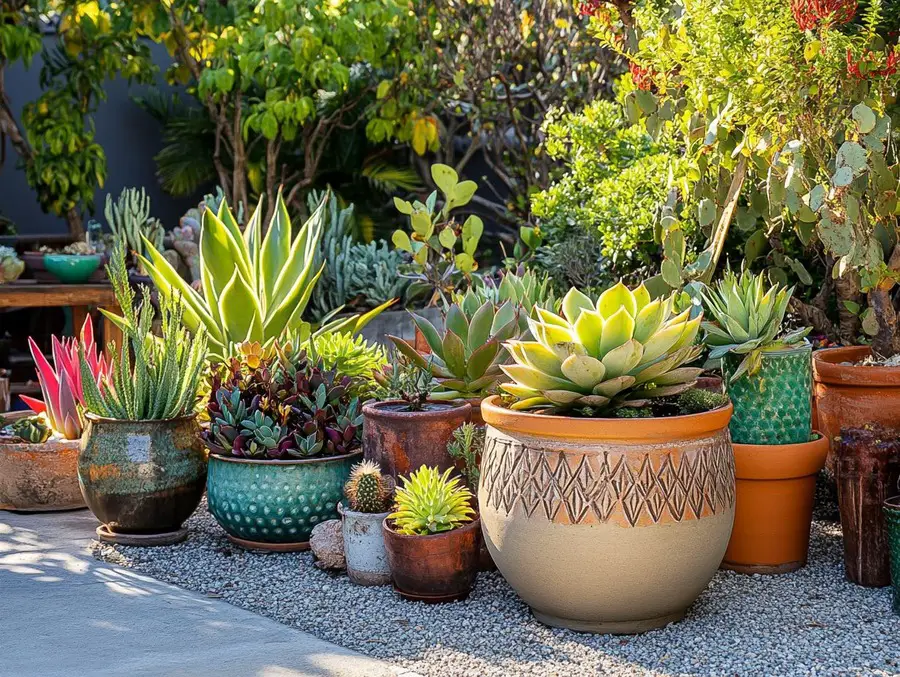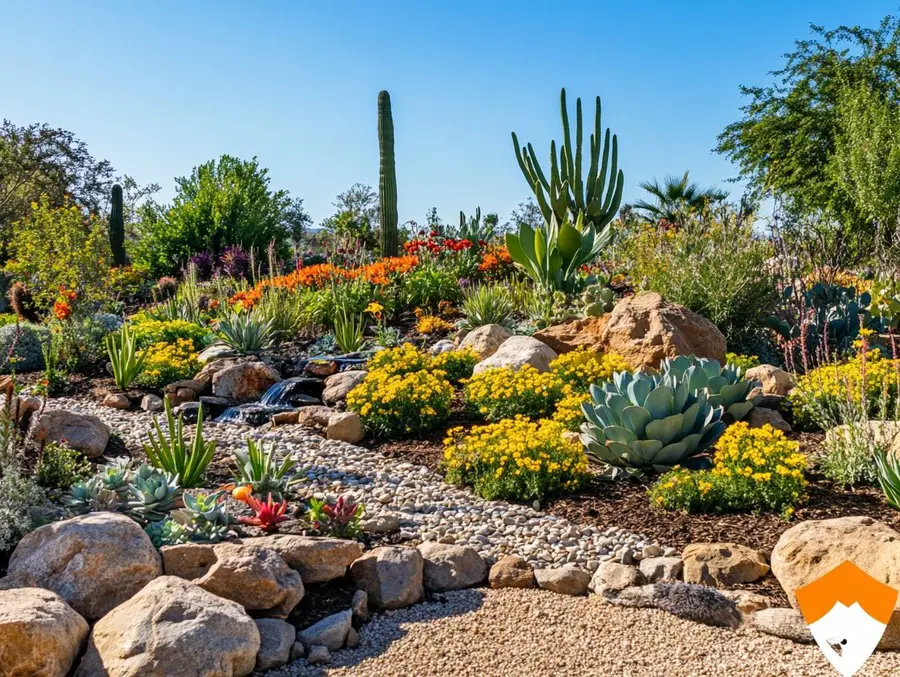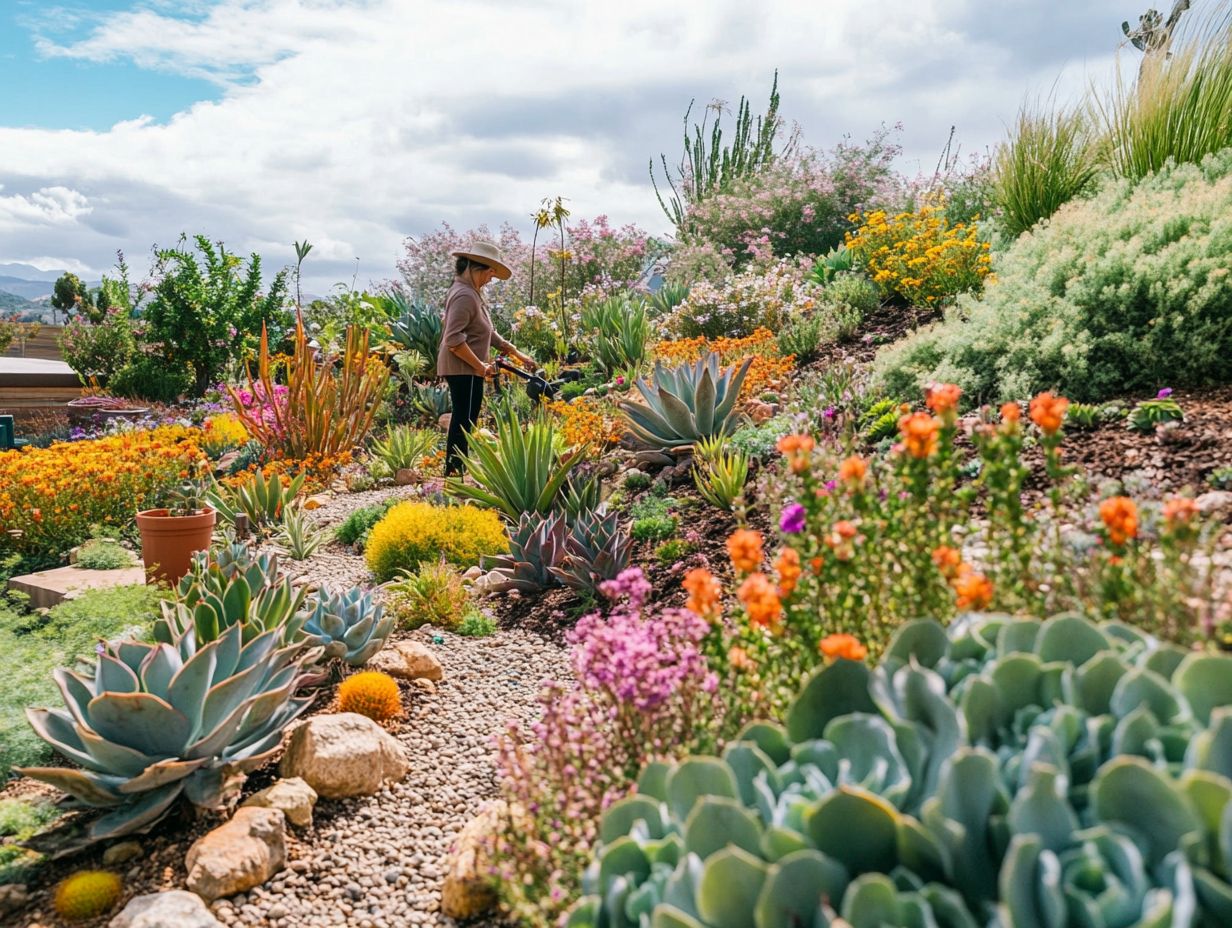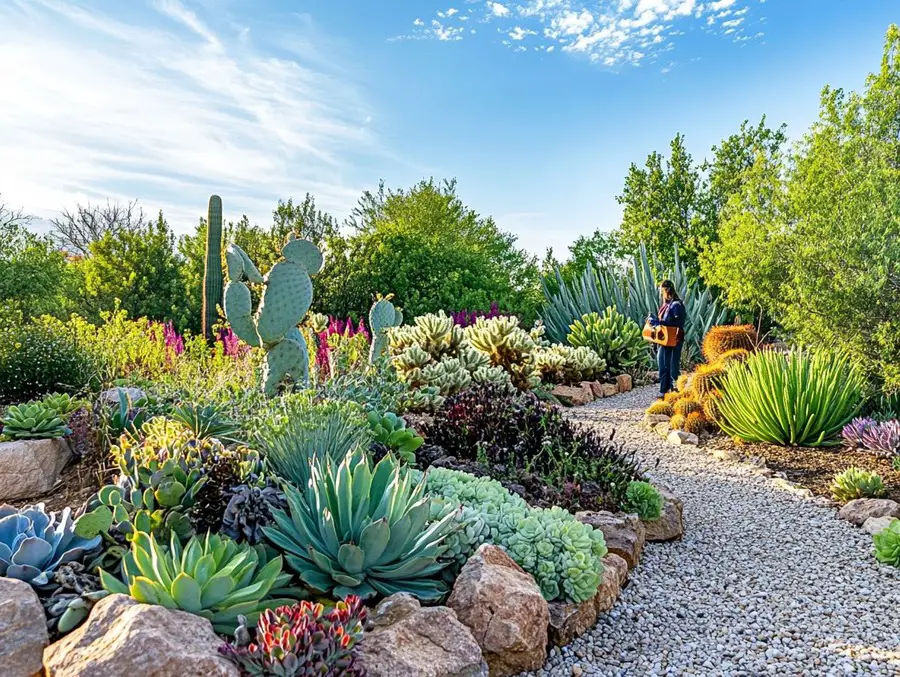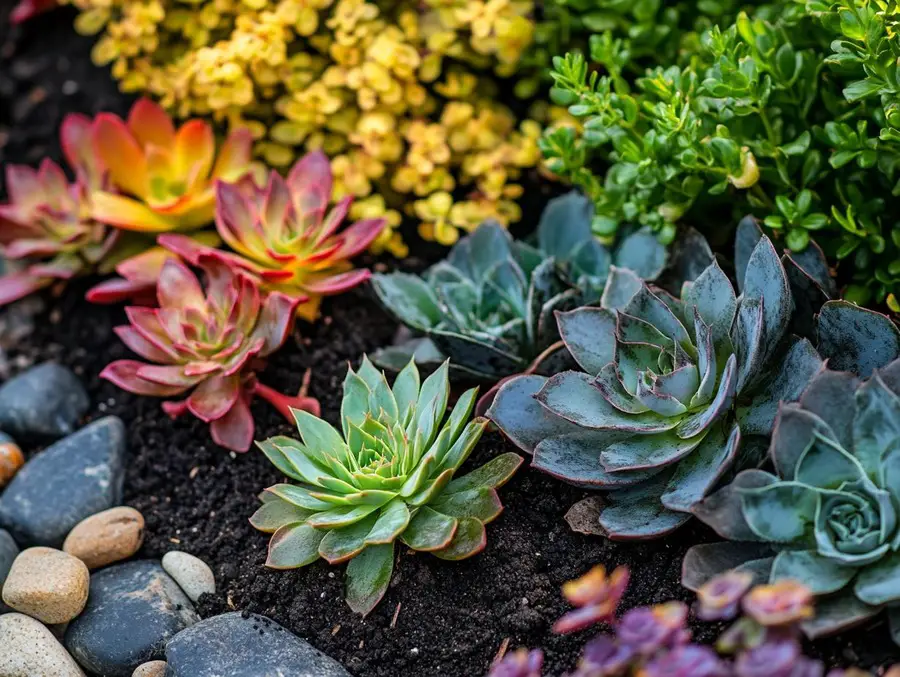We use affiliate links. If you purchase something using one of these links, we may receive compensation or commission.
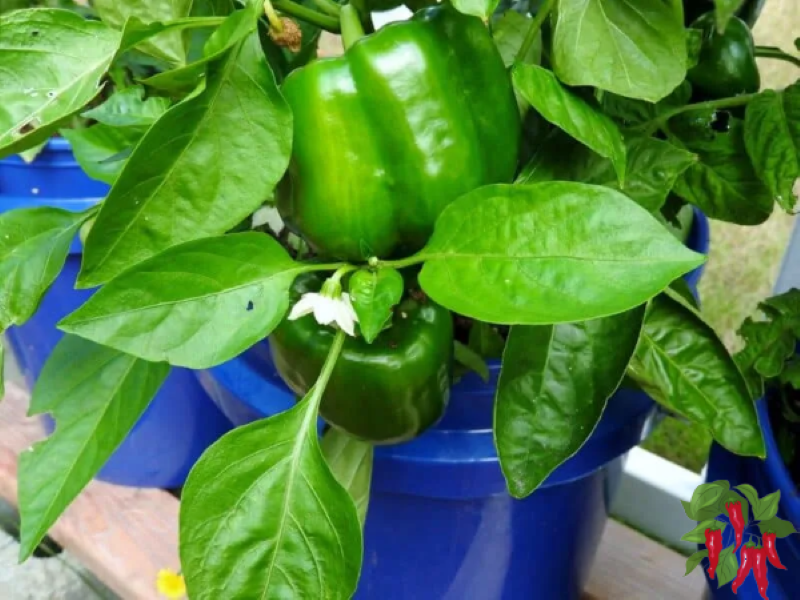
Discover the best vegetables to grow in an apartment! Our guide offers easy tips for fresh, homegrown veggies, even in small spaces. Start your indoor garden today!
Growing Vegetables in an Apartment
Key Takeaways:
- Growing vegetables in an apartment is easy and rewarding.
- Ideal choices include tomatoes, bell peppers, salad greens, herbs, carrots, and beets.
- These plants thrive in limited spaces and can be cultivated with basic care, ensuring fresh, healthy produce right in your home.
Thinking about starting an indoor garden? Look no further!
In this article, we’ll dive into the best vegetables to grow in an apartment, turning your limited space into a lush, edible oasis.
Whether you’re a seasoned gardener or a green-thumbed newbie, our tips will help you harvest success!
Best Vegetables to Grow in an Apartment
Creating a vegetable garden in your apartment isn’t just a trend; it’s a lifestyle shift towards sustainability and healthier living.
With limited space, choosing the right vegetables is crucial.
In this guide, we’ll explore the best options that thrive in apartment settings, ensuring fresh produce is at your fingertips.
Key Takeaways
- Ideal vegetables for apartment gardens are those needing less space and care.
- Tomatoes, bell peppers, and salad greens are among the top choices.
- Herbs, carrots, and beets also grow well in confined spaces.
Selecting the Right Vegetables
Choosing the right vegetables is the first step to successful apartment gardening.
This section focuses on identifying vegetables that thrive indoors, considering factors like space, light, and care requirements.
We’ll introduce a variety of plants ideal for small spaces, ensuring your gardening journey starts on the right foot.
Tomatoes
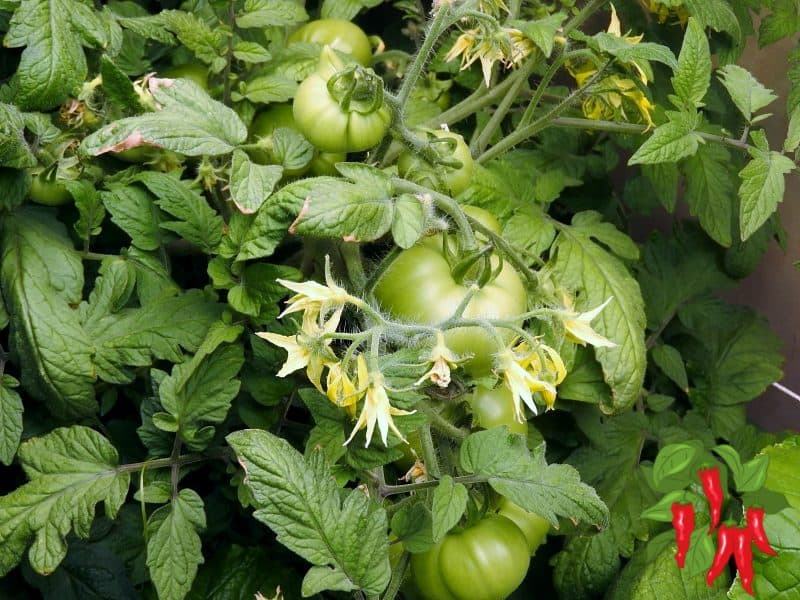
Tomatoes are a versatile and popular choice for indoor gardens. They thrive in warm, sunny spots and can be grown in containers.
Perfect for adding freshness to your meals, tomatoes are a rewarding choice for apartment dwellers.
Choose determinate varieties for containers and patio tomato varieties for small spaces.
Bell Peppers
Bell peppers add color and flavor to any dish, and growing them in your apartment can be a delightful experience.
They require a bit more attention but reward you with vibrant fruits perfect for culinary experiments.
Chili pepper plants are a bit smaller than bell peppers and are a better choice for small spaces.
Salad Greens
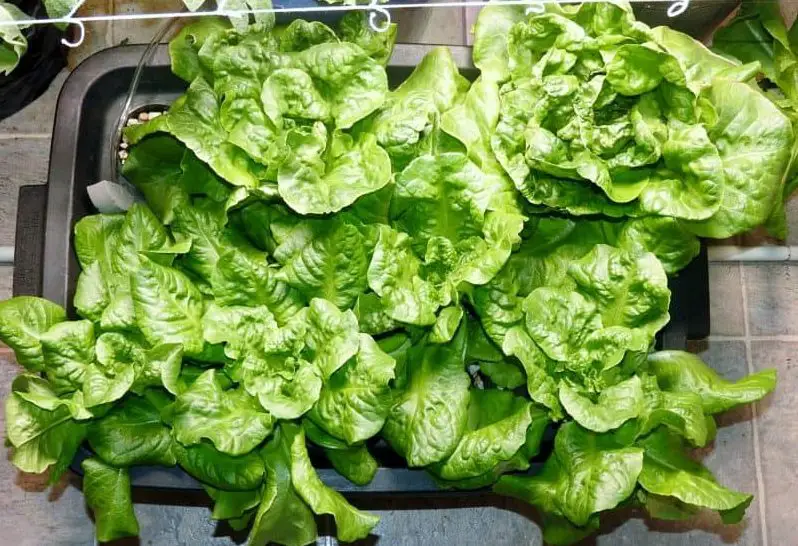
Salad greens like lettuce, arugula, and spinach are perfect for apartment gardening.
They grow quickly and don’t require deep soil, making them ideal for small spaces.
Plus, you can enjoy fresh, crisp greens right from your windowsill.
Carrots
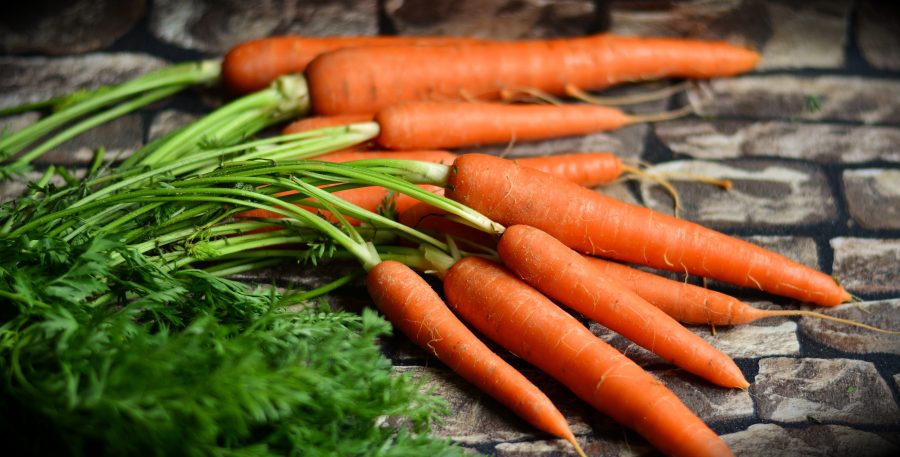
Surprisingly easy to grow indoors, carrots require deeper containers but minimal space around them.
They are a fun, crunchy addition to your indoor garden, providing both nutrition and a sense of achievement as they grow.
Beets
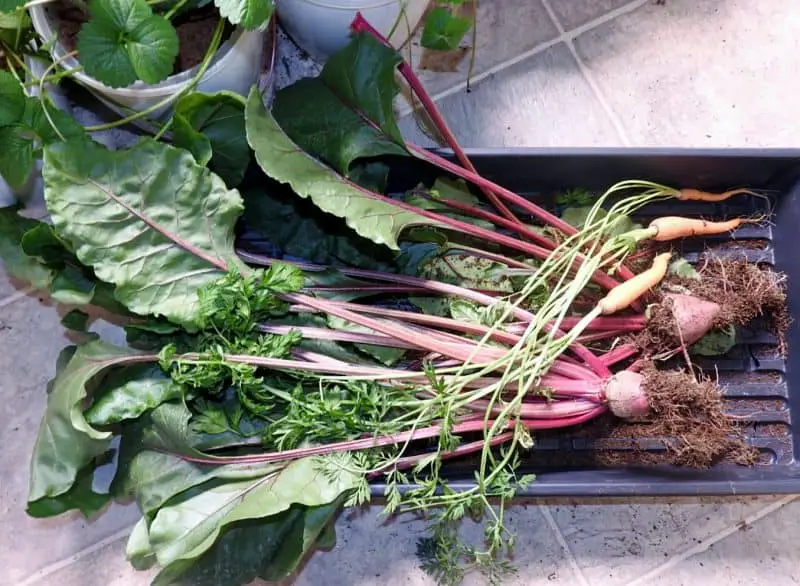
Beets are not only nutritious but also add a splash of color to your indoor garden.
They need more room to grow, so larger containers are essential.
Beet greens are delicious and can be harvested from growing plants as long as you don’t remove the whole top.
Their earthy flavor and nutritional benefits make them a worthy addition to your apartment garden.
Herbs
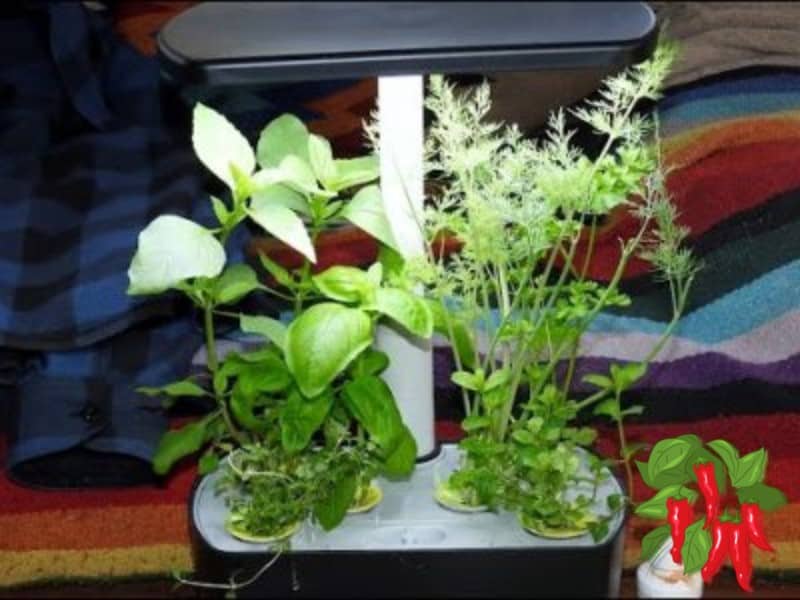
Herbs like basil, parsley, and mint are essential for an indoor garden. They require minimal space and can be grown in small pots, making them perfect for adding fresh flavors to your dishes.
Start an Apartment Herb Garden: Easy Tips and Tricks for Beginners
Growing Tips for Vegetables
Start on your green journey right inside your home with growing tips for vegetables!
This guide is your perfect companion for nurturing a flourishing vegetable garden, whether you’re a seasoned gardener or a curious beginner.
Get ready to turn your space into a haven of fresh, homegrown produce with ease.
Cultivation Tips and Tricks
Growing vegetables in an apartment requires knowing the right techniques.
This section delves into essential tips for lighting, container selection, soil and fertilization, and watering.
These guidelines will help you optimize the growth and health of your indoor vegetable garden.
Starting Your Garden
- Choose the Right Vegetables: Select varieties that are known to thrive in your climate and space. Consider factors like sunlight, temperature, and how much room you have.
- Use Quality Soil: Invest in high-quality potting soil that’s rich in nutrients and designed for container gardening.
Container Selection
The right container can make a huge difference in the growth of your vegetables.
The containers you select should not only fit aesthetically and spatially into your living space but also meet the specific needs of the vegetables you plan to grow.
Here’s a detailed look at how to make the best container choices:
Size Matters
- Depth Requirements: Different vegetables have varying root depths. For instance, shallow-rooted vegetables like lettuce and herbs can thrive in containers as shallow as 6-8 inches, whereas deep-rooted vegetables like tomatoes and carrots require deeper pots, around 12-18 inches.
- Space for Growth: Ensure the container provides ample space for the plant to grow. Crowded roots can lead to stunted growth and reduced yield.
Material Considerations
- Porosity: Terracotta or clay pots are porous, offering good airflow but require more frequent watering. Plastic or resin containers retain moisture longer but may not provide the same level of aeration.
- Weight: Consider the weight of the container, especially if you plan to move it around or if it’s placed on a balcony. Lightweight materials like plastic are easier to handle compared to heavier ones like ceramic.
Drainage is Key
- Adequate Drainage Holes: Proper drainage is essential to prevent waterlogging and root rot. Ensure your container has sufficient drainage holes. If not, you can add more holes to improve drainage.
- Trays and Saucers: If using trays or saucers under pots to protect indoor surfaces, be mindful not to let water sit in them for extended periods.
Color and Heat Absorption
- Light-Colored Containers: In hot climates, light-colored containers can help reflect heat and keep roots cooler. Dark-colored pots absorb more heat, which can be beneficial in cooler climates but may overheat plants in hot conditions.
Functionality and Aesthetics
- Mobility: If you plan to move your plants to chase the sun or protect them from harsh weather, consider containers with wheels or consider using a plant caddy.
- Visual Appeal: The container’s appearance is also important, as it contributes to the overall aesthetic of your home. Choose styles and colors that complement your interior or balcony space.
In summary, the right container can make a significant difference in the success of your vegetable garden.
Consider the size, material, drainage, color, and functionality when selecting containers to ensure a healthy and productive garden that also enhances your living space.
Lighting and Temperature
Every plant has its own lighting and temperature needs. Understanding these requirements is key to successful apartment gardening.
- Sufficient Sunlight: Most vegetables require 6-8 hours of direct sunlight. Find the sunniest spot in your home or use grow lights if natural light is limited.
- Rotate Regularly: Rotate your plants every few days to ensure all sides receive equal light, promoting uniform growth.
Watering Wisely
- Consistent Moisture: Keep the soil consistently moist but not waterlogged. Over-watering can lead to root rot, while under-watering can stress plants.
- Use a Water Meter: For precision, use a water meter to check the soil’s moisture level, especially for deeper pots.
Feeding Your Plants
- Regular Fertilization: Feed your vegetables with a balanced, water-soluble fertilizer every 2-4 weeks. Organic options like compost tea can also be very beneficial.
- Adjust Nutrients Based on Growth Stage: Different growth stages may require different nutrients. For instance, leafy greens need more nitrogen, while fruiting plants benefit from higher potassium.
Pruning and Maintenance
- Prune Regularly: Remove dead or yellowing leaves to encourage growth. For vining plants, pruning can help maintain shape and size.
- Pest and Disease Watch: Regularly inspect for signs of pests or diseases. Use organic methods like neem oil or insecticidal soap for treatment.
Harvesting
- Timely Harvesting: Harvest vegetables when they’re at their peak for the best flavor. Regular harvesting often encourages more production.
- Gentle Technique: Use a sharp knife or scissors to harvest, which is less damaging to the plant than pulling.
Continuous Learning
- Record Your Journey: Keep a gardening journal. Note what works and what doesn’t, which can be an invaluable resource for future gardening endeavors.
- Stay Curious: Experiment with different plants and techniques. Gardening is a continuous learning process, and each season brings new opportunities to grow and improve.
By following these tips and embracing the journey of vegetable gardening, you’ll not only cultivate a bountiful harvest but also enjoy the therapeutic benefits of nurturing your own little green space. Happy gardening!
Seasonal Considerations for Apartment Gardening
Understanding how seasons impact indoor gardening is crucial for the health of your plants.
This section will guide you through adapting your gardening practices to suit different seasonal conditions, ensuring your plants thrive all year round.
Adapting to Winter Conditions
Winter brings unique challenges to apartment gardening, primarily due to reduced light and lower temperatures.
Understanding how to adapt can ensure your vegetables continue to thrive even in the colder months.
Maximizing Light Exposure
- Positioning Plants: Relocate your plants to areas that receive the most daylight during winter.
- Artificial Lighting: Utilize grow lights to supplement natural light, especially for plants requiring high light intensity.
- Reflective Surfaces: Place reflective materials like aluminum foil or mirrors near plants to increase light exposure.
Regulating Temperature
- Insulation: Keep plants away from cold windows and insulate window sills.
- Room Temperature: Maintain a consistent indoor temperature, ideally between 65-75°F (18-24°C), using room heaters if necessary.
- Humidity Control: Use humidifiers or place water trays near heaters to maintain adequate humidity, as indoor air can become very dry in winter.
Summer Gardening Strategies
Summer’s increased temperatures and longer daylight hours can greatly benefit apartment gardens, but they also require specific care strategies to prevent plant stress.
Managing Heat
- Shade and Ventilation: Provide shade during the hottest part of the day and ensure good air circulation to prevent overheating.
- Watering Routine: Increase watering frequency to combat the higher rate of evaporation, but avoid overwatering.
- Cooling Techniques: Use fans or air conditioning to keep temperatures stable, especially during heatwaves.
Optimizing Light
- Sunlight Regulation: Monitor and adjust the placement of plants to avoid excessive direct sunlight that can cause leaf burn.
- Morning Light Preference: Expose plants to morning sunlight, which is less intense than the afternoon sun.
- Light Diffusion: Use sheer curtains or blinds to diffuse strong sunlight, providing a balance of light and protection.
By applying these strategies, you can help your apartment garden flourish throughout the year, adapting to the seasonal changes in light and temperature.
Space-Saving Techniques in Apartment Gardening
In the world of apartment gardening, space is a valuable commodity.
However, limited space can be creatively optimized to establish a flourishing garden.
This section will guide you through innovative techniques to maximize your gardening area, transforming even the smallest spaces into green oases.
Using Vertical Spaces
Vertical gardening is an excellent way to make the most of limited space. Here’s how you can utilize vertical spaces effectively:
- Wall-Mounted Planters: Install wall-mounted planters or shelves to grow herbs and small vegetables. This not only saves floor space but also adds a green aesthetic to your walls.
- Hanging Planters: Utilize ceiling hooks or wall brackets for hanging planters. These are perfect for trailing plants like cherry tomatoes or herbs.
- DIY Trellises: Build or buy trellises for climbing vegetables like peas or beans. These structures can be placed against any vertical surface, maximizing your growing area vertically.
Creative Planter Ideas
When floor space is at a premium, innovative planter solutions can make a significant difference. Here are some creative planter ideas:
- Stackable Planters: Use stackable or tiered planters to grow multiple plants in a single footprint. These are great for herbs, strawberries, and even some leafy greens.
- Window Boxes: Install window boxes on the inside of your windowsills. They’re perfect for herbs and small vegetables and utilize an often-overlooked space.
- Repurposed Containers: Turn everyday items like mason jars, old buckets, or even shoe organizers into unique planters. This approach adds character to your space and is a great way to upcycle.
Implementing these space-saving techniques will not only help you grow a variety of vegetables and herbs but also enhance the aesthetic appeal of your apartment, making it a greener and more vibrant place to live.
Embracing Organic Gardening
Organic gardening in an apartment setting is not only beneficial for your health but also kinder to the environment.
It involves using natural methods to grow and care for your plants.
This section will delve into how you can maintain an organic and healthy garden by using natural fertilizers and eco-friendly pest control methods.
Natural Fertilizers
Proper fertilization is key to the health and growth of your plants. Here are some organic fertilization methods:
- Compost: Use homemade or store-bought compost to enrich your soil. Compost provides a rich array of nutrients and improves soil texture.
- Worm Castings: Worm castings are a great organic fertilizer. They slowly release nutrients into the soil and help with water retention.
- Organic Liquid Fertilizers: There are many organic liquid fertilizers available, like seaweed extracts or fish emulsions, which can be diluted and used for regular watering. They provide a quick nutrient boost.
- DIY Fertilizers: You can make your own fertilizers using kitchen scraps like banana peels, coffee grounds, or eggshells. These items can be composted or made into nutrient-rich tea for your plants.
Eco-Friendly Pest Control
Keeping pests at bay is crucial, but it can be done effectively without harmful chemicals. Here are some natural pest control solutions:
- Neem Oil: Neem oil is a natural pesticide that works against a wide range of pests. It’s safe for your plants and the environment.
- Insecticidal Soap: Make your own insecticidal soap using natural dish soap and water. It’s effective against aphids, mites, and other soft-bodied insects.
- Beneficial Insects: Introduce beneficial insects like ladybugs or lacewings into your garden. They feed on common pests like aphids and can help maintain a natural balance.
- Physical Barriers: Use physical barriers like netting or sticky traps to protect your plants from pests.
- Herbal Repellents: Planting herbs like basil, mint, or lavender can deter pests due to their strong scents. These can be interplanted with your vegetables for a mutually beneficial arrangement.
By embracing these organic gardening practices, you not only ensure the health of your plants but also contribute to a healthier living environment.
Organic methods are sustainable, effective, and can be easily adopted in an apartment garden setting.
Watering Systems for Indoor Gardens
Effective watering is crucial for the health and growth of indoor gardens.
However, with the busy lifestyles many of us lead, maintaining consistent watering can be a challenge.
This section explores efficient watering systems that ensure your plants receive the right amount of water without daily attention.
Self-Watering Planters
Self-watering planters are a game-changer for indoor gardening, especially for those with a busy schedule or prone to forget water.
- How They Work: These planters have a built-in reservoir at the bottom that holds water. The soil draws water up through capillary action, providing a consistent moisture level.
- Benefits: They reduce the frequency of watering, ensure consistent moisture, and are great for preventing both over and under-watering. This can lead to healthier plant growth and less stress for the gardener.
- Usage Tips: When setting up a self-watering planter, ensure the soil makes good contact with the wicking system. Regularly check the water level in the reservoir and refill as needed. These planters are particularly beneficial for moisture-loving plants.
DIY Drip Irrigation
A DIY drip irrigation system is a simple and cost-effective solution for ensuring your indoor plants get the water they need.
- Setting It Up: You can create a basic drip system using a plastic bottle or a water bag. Make small holes in the bottom or side, fill them with water, and position them to slowly drip into the soil.
- Advantages: This system provides a slow, steady supply of water directly to the soil, reducing water wastage and ensuring deep watering. It’s particularly useful for larger plants or when you’re away from home.
- Customization: You can customize the flow rate based on the size and number of holes. For larger setups, consider using a hose attached to a water container with a flow control valve.
- You can also buy ready-to-use drip systems like Blumats.
By incorporating these watering systems into your indoor garden, you can ensure your plants receive the right amount of water with minimal effort.
This not only makes gardening more manageable but also promotes the growth of healthier, more robust plants.
Harvesting and Storing Homegrown Vegetables
The reward of apartment gardening lies in harvesting your own fresh produce.
However, the process doesn’t end with picking the vegetables.
Proper harvesting techniques and storage methods are crucial to maintain the freshness and extend the shelf life of your homegrown vegetables.
Effective Harvesting Techniques
Harvesting at the right time and in the right way is essential to get the best flavor and longevity out of your vegetables.
- Leafy Greens: Harvest leafy greens like lettuce and spinach in the morning when they are most hydrated. Cut the outer leaves first, allowing the inner leaves to continue growing.
- Tomatoes: Wait until they are fully colored and slightly soft to the touch. Harvesting in the morning ensures they retain their best flavor.
- Root Vegetables: Such as carrots and beets, should be harvested when they reach the desired size. Gently loosen the soil around them and pull out without damaging the plant.
- Herbs: Cut herbs just above a leaf pair to encourage bushier growth. Harvest in the morning after the dew has dried for the best flavor.
Storage Solutions
Proper storage is key to extending the freshness of your vegetables and herbs.
- Refrigeration: Most vegetables like leafy greens, carrots, and beets should be stored in the refrigerator. Wrap them in a damp cloth or store them in perforated bags to maintain moisture.
- Countertop Storage: Tomatoes and peppers are best stored at room temperature away from direct sunlight. This helps retain their flavor and texture.
- Herb Preservation: Store herbs like basil, parsley, and cilantro in a glass of water, just like cut flowers. Alternatively, wrap them in a damp paper towel and store them in the refrigerator.
- Freezing: For longer preservation, many vegetables can be blanched and frozen. This is ideal for greens and beans, locking in nutrients and flavor.
- Dry and Dark Storage: Root vegetables like carrots and beets can be stored in a cool, dark place if not refrigerated. Ensure they are dry and ventilated to prevent rot.
Understanding these harvesting and storage techniques will ensure that your vegetables stay fresh and delicious long after they have been picked, allowing you to enjoy the fruits of your labor to the fullest.
Overcoming Gardening Challenges
Apartment gardening, while rewarding, comes with its unique set of challenges.
Limited light and space are two of the most common issues.
However, with a few strategic approaches, these challenges can be effectively managed, allowing you to cultivate a thriving indoor garden.
Dealing with Limited Light
Light is a critical factor for plant growth, and not all apartments are blessed with abundant natural light.
Here are some solutions for growing vegetables in low-light conditions:
- Supplement with Grow Lights: LED grow lights can effectively substitute natural sunlight. They’re energy-efficient and can be used to provide the spectrum of light needed for photosynthesis.
- Choose Low-Light Tolerant Plants: Some vegetables and herbs require less light. Leafy greens like spinach, lettuce, and herbs such as mint and parsley can thrive in lower light conditions.
- Utilize Reflective Surfaces: Place reflective materials like mirrors or aluminum foil around your plants to maximize light exposure from available sources.
- Rotate Plants Regularly: Regular rotation ensures all sides of the plant receive equal light, promoting even growth.
Maximizing Limited Space
Space constraints are a common hurdle in apartment gardening. Here are some ideas to maximize your gardening space efficiently:
- Vertical Gardening: Utilize vertical spaces with hanging planters, wall-mounted pots, or vertical plant stands. This approach maximizes the use of available vertical space without occupying much floor area.
- Multi-Level Plant Stands: These stands allow you to place several plants in a cascading arrangement, taking up minimal floor space.
- Window Sill Gardening: Utilize window sills for small pots or narrow planters. This is an ideal spot for herbs and small vegetables.
- Balcony Rail Planters: If you have a balcony, rail planters are a great way to use this space without cluttering the floor.
- Container Gardening: Use pots and containers of various sizes that can be easily moved or rearranged to fit available spaces.
By adopting these strategies, you can effectively overcome the common challenges of limited light and space in apartment gardening, ensuring your garden remains healthy and productive.
Building a Gardening Community
Gardening, particularly in an apartment setting, can be a more enriching and enjoyable experience when shared with others.
Building connections with gardening communities and tapping into various resources can provide immense support, advice, and inspiration.
This section explores the avenues for engaging with fellow gardeners and enriching your gardening journey.
Joining Local Communities
Participating in local gardening groups offers numerous benefits, from shared knowledge to a sense of belonging.
Here’s how to find and engage with these communities:
- Community Gardens: Look for community gardens in your area where members share space, resources, and expertise. These gardens are great for learning and socializing with fellow gardeners.
- Local Workshops and Classes: Many nurseries, botanical gardens, and community centers offer workshops and classes. These can be fantastic opportunities to learn new skills and meet people with similar interests.
- Gardening Clubs: Search for local gardening clubs or societies. These clubs often host meetings, garden tours, and plant swaps, providing a platform to share experiences and get advice.
- Farmer’s Markets: Visiting local farmer’s markets can connect you with local growers. They can offer tips specific to your region and might even have plant starters or unique seeds.
Online Gardening Resources
In today’s digital age, online resources are invaluable for gardeners. They offer a plethora of information and community support right at your fingertips.
- Gardening Forums and Groups: Platforms like Reddit, GardenWeb, and Facebook have numerous gardening groups and forums. These are great places to ask questions, share successes or challenges, and learn from others’ experiences.
- Blogs and YouTube Channels: Follow gardening blogs and YouTube channels for tips, tutorials, and inspiration. Many expert gardeners share their knowledge online, covering topics from basic gardening to specific techniques.
- Mobile Apps: There are several gardening apps available that offer plant identification, care tips, and reminders. These apps can be a handy tool in your gardening journey.
- Virtual Workshops and Webinars: Keep an eye out for virtual workshops or webinars hosted by gardening experts. These sessions can be a great way to learn new techniques and stay updated on gardening trends.
By engaging with both local communities and online resources, you can enhance your knowledge, solve gardening dilemmas, and connect with a network of people who share your passion for apartment gardening.
This community-building aspect of gardening not only enriches your experience but also contributes to a wider culture of urban green spaces and sustainable living.
FAQs on Apartment Vegetable Gardening
Navigating the world of apartment gardening comes with its share of queries.
This FAQ section aims to address common questions, providing practical answers that can help both novice and experienced gardeners achieve successful indoor vegetable gardens.
Q: How often should I water my indoor vegetables?
A: The watering frequency depends on the vegetable type and the environment. Generally, it’s best to keep the soil moist but not waterlogged. Check the top inch of the soil; if it’s dry, it’s time to water.
Q: Can I grow vegetables in limited sunlight?
A: Yes, many vegetables can grow in limited sunlight. Leafy greens like lettuce and spinach are more tolerant of lower light conditions. Using grow lights can also supplement natural light.
Q: What are some common pests in indoor gardens and how to deal with them?
A: Common indoor garden pests include aphids, spider mites, and whiteflies. Combat them by regularly inspecting plants, using natural remedies like neem oil, or introducing beneficial insects like ladybugs.
Q: How do I pollinate indoor vegetable plants?
A: Some plants, like tomatoes and peppers, are self-pollinating. Gently shaking the plant can help distribute pollen. For others, you may need to hand-pollinate by transferring pollen from one flower to another with a small brush or cotton swab.
Q: What’s the best way to maximize space in a small apartment for gardening?
A: Utilize vertical space with hanging planters or shelves. Choose compact varieties of vegetables and consider multi-purpose furniture that can accommodate planters. Also, rotating plants to ensure even light exposure is beneficial.
Best Vegetables to Grow in an Apartment Conclusion
Wrapping Up Your Apartment Garden Journey
Starting on the journey of apartment vegetable gardening is not only a step towards sustainable living but also a rewarding personal endeavor.
This guide aims to provide you with the knowledge and confidence to start your own indoor garden, regardless of the size of your apartment.
The Joy of Harvesting
The true joy of apartment gardening lies in the harvest. There’s a unique satisfaction in cooking with fresh produce that you’ve grown yourself.
This not only adds freshness to your meals but also a sense of achievement.
Health and Well-being
Growing your own vegetables isn’t just about fresh produce; it’s about the health and well-being that comes with gardening.
The process of nurturing your plants can be therapeutic and contribute to a healthier lifestyle.
Sustainable Living
By growing vegetables in your apartment, you’re contributing to a more sustainable way of living.
This practice reduces your carbon footprint and promotes a greener, more eco-friendly lifestyle.
Continuous Learning
Remember, gardening is a continuous learning process.
Each plant offers a new experience and opportunity to grow as a gardener.
Embrace the challenges and enjoy the journey of apartment vegetable gardening. Happy gardening!
Related Content
Visit my Amazon Influencer Page for videos and gardening products Grow Your Own Garden

